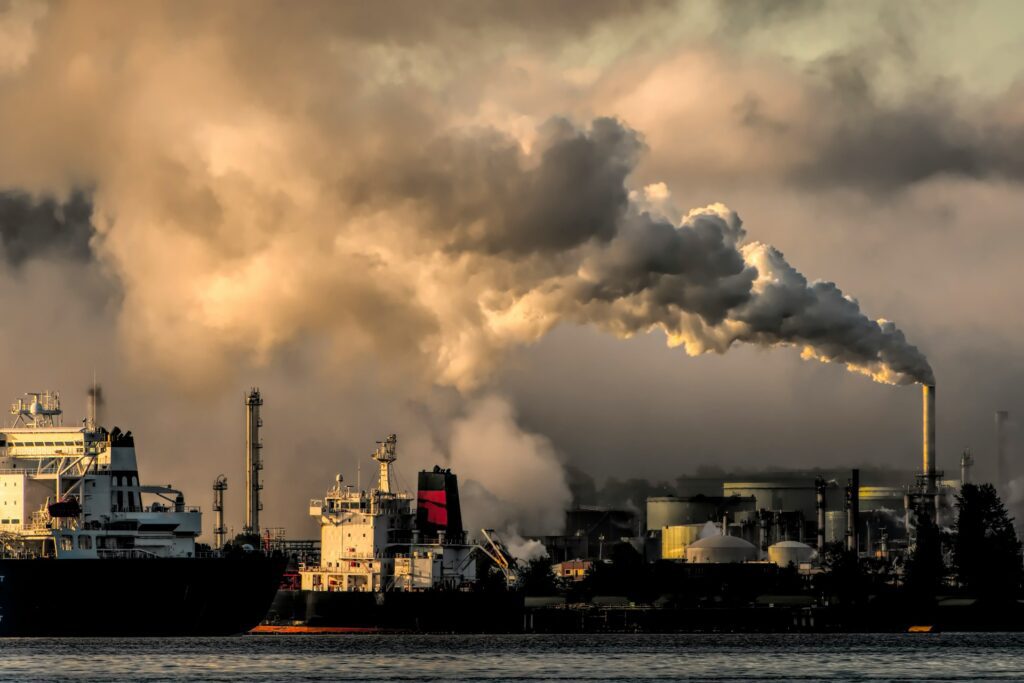Climate change is a topic that dominates discussions about the environment, but understanding its intricacies can be quite challenging. Let’s delve into what causes climate change and explore how our actions contribute to this global issue.
What Causes Climate Change?
To tackle problems like climate change, you have to be aware of the roots of the problem. So, let’s check out some of the causes of climate change:
Four Major Gases That Contribute to the Greenhouse Effect
Understanding the greenhouse effect starts with knowing about the gases that trap heat in the Earth’s atmosphere. Here are the four major gases:
Carbon Dioxide
A vital component of the atmosphere, carbon dioxide (CO2) is released through natural processes (like volcanic eruptions) and through human activities, such as burning fossil fuels and deforestation.
Methane
Like many atmospheric gases, methane comes from both natural and human-caused sources. Methane comes from plant-matter breakdown in wetlands and is also released from landfills and rice farming. Livestock animals emit methane from their digestion and manure. Leaks from fossil fuel production and transportation are another major source of methane, and natural gas is 70% to 90% methane.
Nitrous Oxide
A potent greenhouse gas produced by farming practices, nitrous oxide is released during commercial and organic fertilizer production and use. Nitrous oxide also comes from burning fossil fuels and burning vegetation and has increased by 18% in the last 100 years.

Chlorofluorocarbons (CFCs)
These chemical compounds do not exist in nature – they are entirely of industrial origin. They were used as refrigerants, solvents (a substance that dissolves others), and spray can propellants.
For more in-depth information, check out the source here: NASA Climate Change Causes.
How Human Activities Amplify the Greenhouse Effect
Human activity Is the cause of increased greenhouse gas concentrations: In the past 100 years, our use of fossil fuels like coal and oil has significantly increased the amount of carbon dioxide (CO2) in the air. How does this happen? It’s simple: burning these fuels combines carbon with oxygen, producing CO2. 💨
But it’s not just about fossil fuels. Did you know that land clearing for agriculture and other human activities also boosts greenhouse gases?
How can we tell what the levels of greenhouse gases and temperatures were like long before modern technology?
Since 1750, the start of the Industrial Revolution, CO2 levels have shot up by nearly 50%! This isn’t just a natural variation; it’s largely driven by human activities. Ever heard of an isotopic fingerprint? It’s like nature’s own detective, pointing straight to human involvement. Learn more about it here: Isotopic fingerprint.
The Intergovernmental Panel on Climate Change (IPCC) is pretty clear in its Sixth Assessment Report: the spike in CO2, methane, and nitrous oxide is definitely because of us humans. And our influence is reshaping the atmosphere, oceans, ice caps, and life on Earth in major ways. 🌎
The Path Forward
Understanding these factors is just the first step. It’s crucial for each of us to be aware of our environmental impact and take actionable steps to reduce our carbon footprint. Whether it’s choosing sustainable transportation options, reducing waste, or supporting clean energy initiatives, every action counts.
Ready to learn more about renewable energies? Read on here.
By educating ourselves and making informed choices, we can help mitigate the effects of climate change and safeguard our planet for future generations.
Let’s be the change we wish to see! 🌱



